Exploring the Forgotten World Highway’s Stratford-Okahukura railway line

The decommissioned Stratford-Okahukura line covers some of the most isolated country in the North Island making it home to the tunnels, bridges and townships that time forgot.
Words & Photos: Jason Burgess
Along the oxidised rail tracks of the now-defunct Stratford-Okahukura Line, the crumpled countryside feels locked in an old-time western. A hoarding suggests we have entered the Republic of Whangamomona, yet so far the only signs of life are impossibly buckled track sidings resisting collapse and moss-draped farm gates leading to abandoned homesteads.
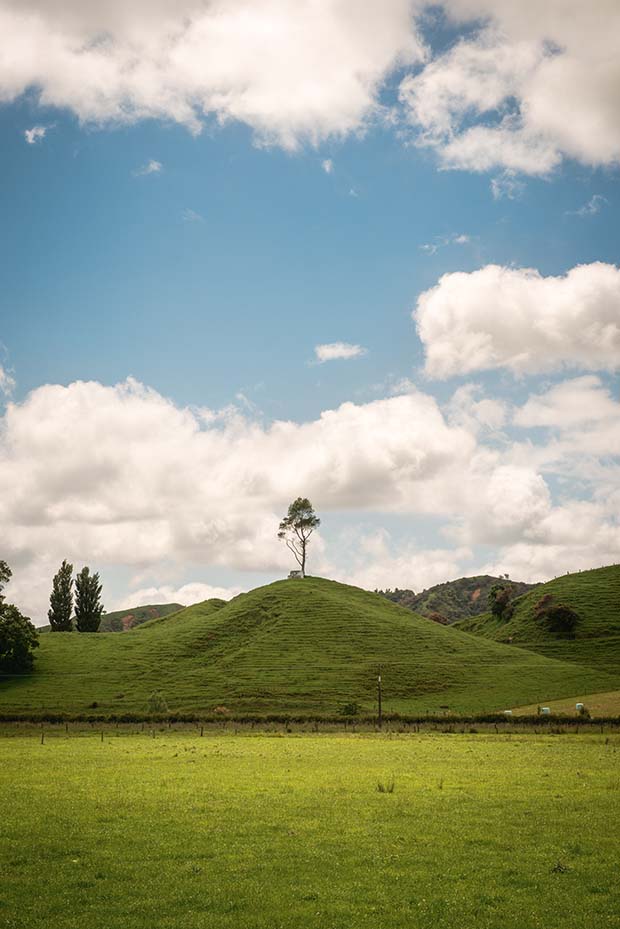
Out here, cellphones are a thing of the future, and the characters have stepped from the pages of a Barry Crump saga. Rough-edged and unapologetically raw, this is frontier-land Aotearoa-style.
It all began 60-kilometres back at a railway crossing east of Stratford, where work on the Stratford-Okahukura Line (or SOL) first commenced in 1901. With a smile, our Forgotten World Adventures guide, Dave Digby, starts as he means to go on.
“I’m going to tell you some facts, some legends and some Taranaki bullshit,” he says. But for the most part he sticks to the specifics.
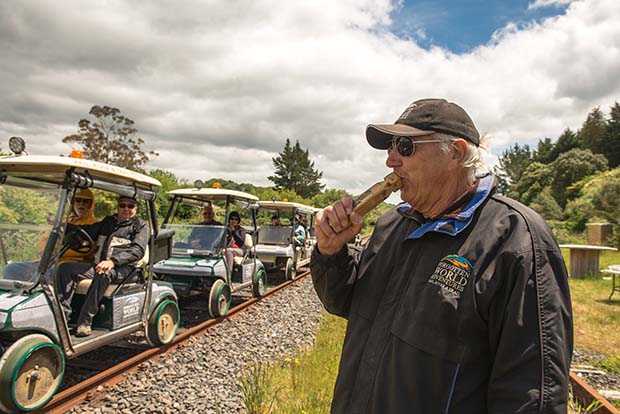
Forgotten World Adventures guide Dave Digby welcomes all aboard.
“You’ll follow the line east as it was built, crossing 91 bridges and passing through 24 tunnels. The tunnels have two dates above them; when they were started and when they finished.”
He then blows a Thomas-the-Tank-Engine wooh-a-hoo with a pine whistle and it is all aboard our self-drive modified golf carts (yes golf carts) for a two-day excursion into one of the most isolated parts of the North Island.
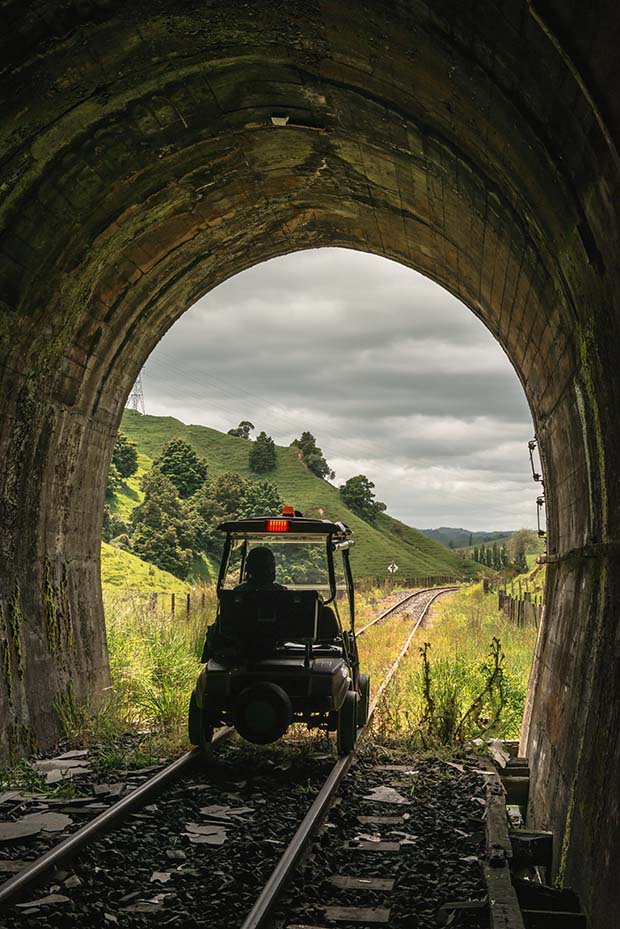
Into the heartland through 24 tunnels, some over one-kilometre long.
Since KiwiRail mothballed the SOL in 2010, we are the only rolling stock on the track. The whistles of passing trains may have dissolved into the winds of time, but at least these carts clickety-clack like the real thing.
Long straights make short work of the bucolic pasturelands, where high-tech dairy farms and rolling hummocks conceal natural-gas pipelines and refineries. The rocks that form the line beneath us were quarried from Mount Taranaki, which today is shouldered in cloud.
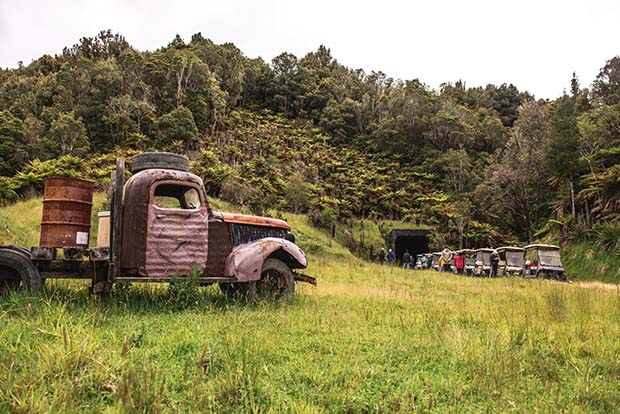
As we pass through the tiny township of Toko, the local kindy kids and mums wait trackside to farewell us. By the time we make Douglas for morning tea – delivered by road by Dave’s wife, Carol – the 21st century is a memory.
The town’s once flourishing brick kiln has long been dismantled and the only vestiges of a once-bustling settlement sit crumbling across The Forgotten Highway, SH43. The Digbys are committed to restoring this section of the line.
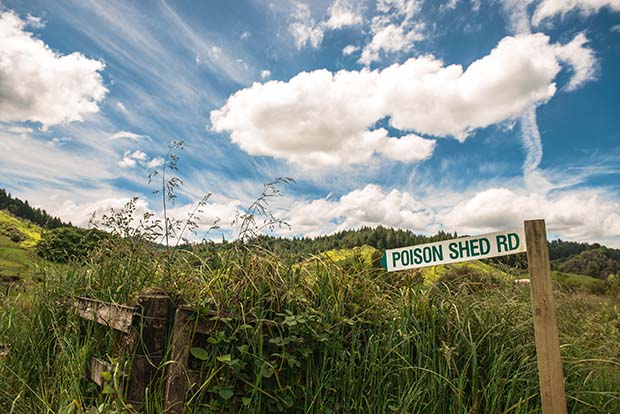
“We found the old rail shed in a paddock upside down,” says Dave. “We built a new floor and bought an old door for it. Then magically one day the original Douglas sign appeared.”
After a hot cuppa, we are off into the Crater, local-speak for the Huiroa Saddle. On the downhill we pull up outside Twisty’s, a wood-wheeled wagon where an international triumvirate of WWOOFers are selling preserves, jams and kombucha.
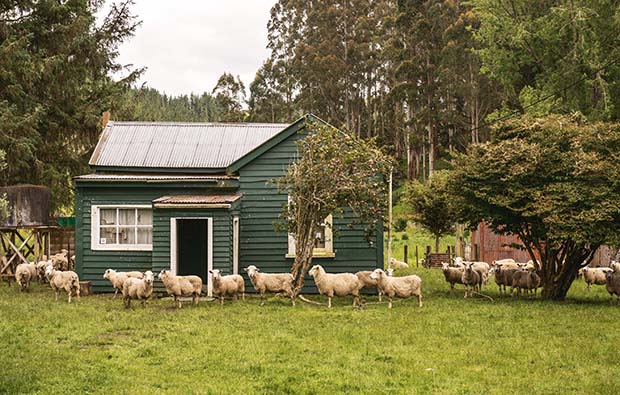
Onwards, fence lines bow and teeter beneath roller-coasting hillsides of tall poplars and vast farms. The rail-side decay speaks of not-so-distant hard-fought pioneering lives. Random fruit trees and foxgloves hint at former gardens, while virtually every bend and tunnel signals another microclimate.
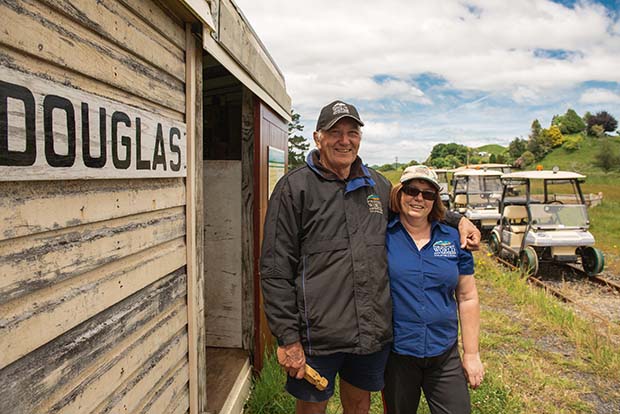
Champions of East Taranaki Dave and Carol Digby at the restored Douglas Station.
The 142-kilometre line was designed as a secondary route between Auckland and Wellington in case Ruapehu erupted and destroyed the main trunk. It also served to carry coal from places now consigned to oblivion like Tangarakau and Tatu. Much of the way it follows an ancient coast-to-King-Country walking track. Māori never settled between Mounts Ruapehu and Taranaki, believing it bad luck.
At Whangamomona, the Valley of Plenty, we bed down in the century-old hotel. Much has been written about this remote hamlet, particularly after it declared itself a republic in 1989 in protest at redrawn council boundaries.
There have been five presidents since, including Billy Gumboot the goat and Tai the poodle. Last year the republic lost long-time president Murt Kennard, so publican Vicki Pratt was appointed caretaker until the next elections.
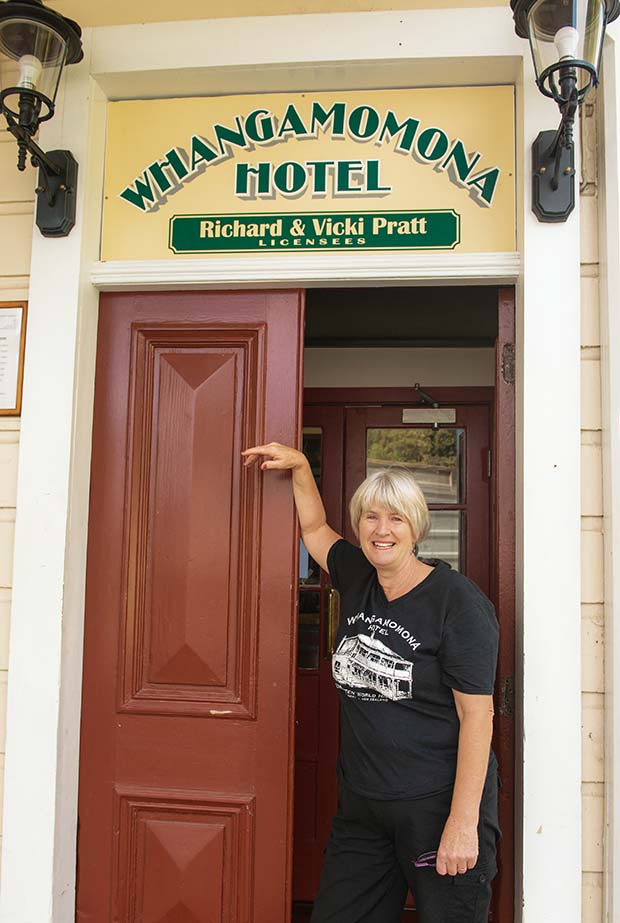
Vicki Pratt, Whangamomona publican and president.
“I was in the kitchen at the time so I didn’t have much choice,” she says. Vicki and her husband, Richard moved here two and a half years ago from rural Drury.

The Whangamomona Hotel.
“We love this community. This is how it was in the 1960s. The pub is not ours. It is to be kept for New Zealand.”
Tucked in at the corner of the bar is the 86-years-young local legend, Johnny Potu.
With a glint in his eye I hear him introduce a tourist to the “miner’s spoon” – Pouto’s old shovel from his time in the pit at Ohura, which hangs on the pub wall. “I worked underground from 1947 to 1971,” he tells me. “I moved to Whanga in 1983.”
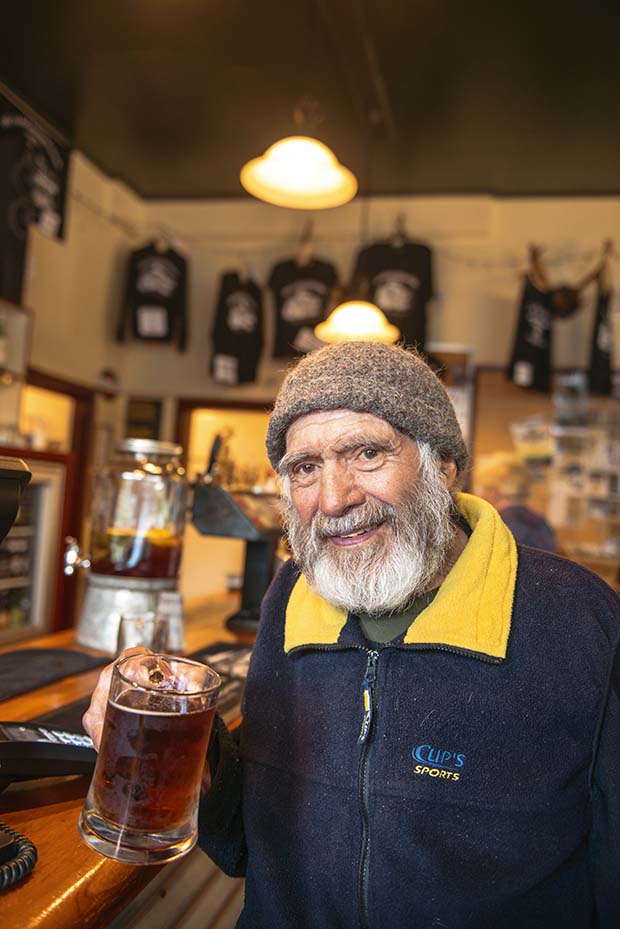
Johnny Pouto.
Outside is ex-city girl Mel Bromwich and her son Archer, who have come to town from Tahora, 19 kilometres away to wait for husband Brad who is out culling goats.
“The only reason we go into Stratford is for flour, sugar and salt. That’s about it – we have veges and all the meat we want. If you need milk you can always find something to milk around here.”
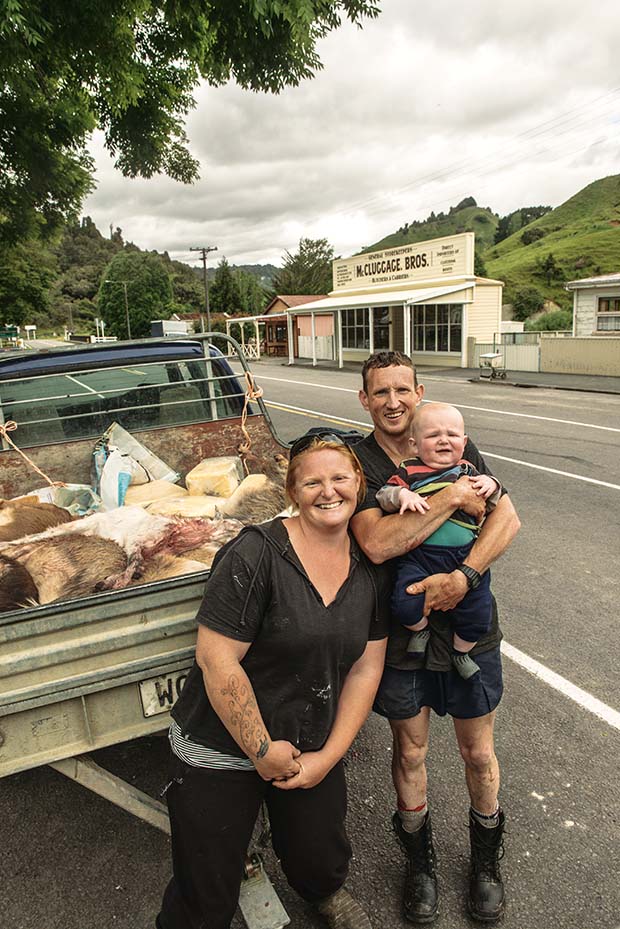
Mel, Brad and Archer Bromwich.
Then there’s the incorrigible Pete Savage who loves nothing better than a fresh townie with whom to share his backcountry knowledge.
“Ask anyone around here for Pete. I get my messages at the bar, on a piece of paper rolled up in my handle. No 13, that’s my lucky number. Ask anyone they’ll tell you.”
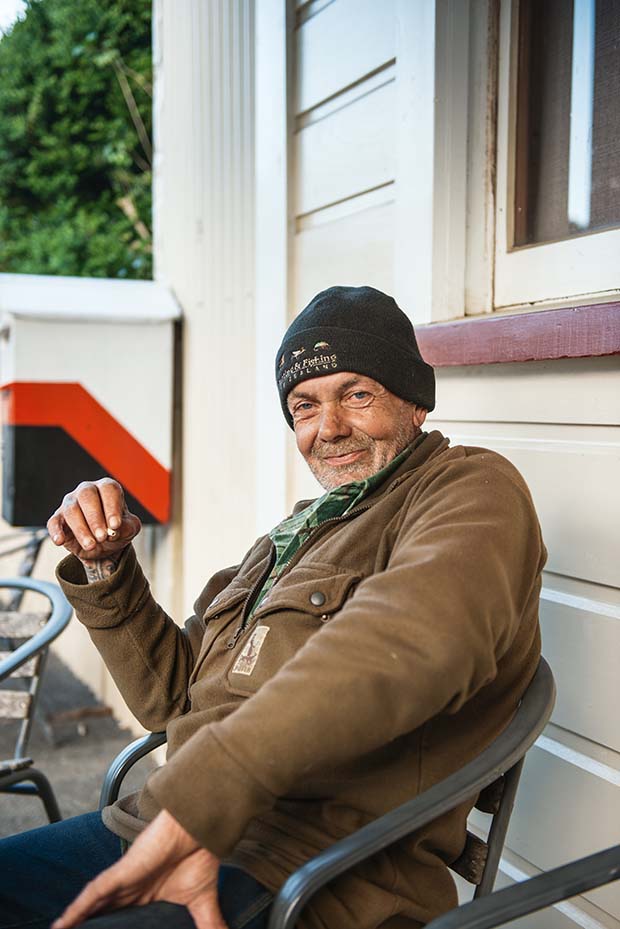
Pete Savage.
Dawn breaks late over this valley. Down at the railhead, Griff and Paul are busy getting the carts ready. Paul retired here after 30 years in the army. He tells me there are 15 people living in Whanga and four of them are named Paul. Griff meanwhile delivers a safety refresher.
“We’ll drive through the railway crossings in a chain because the locals can’t read and they’re colour blind. If we leave room for a motorbike they’ll try and drive a tractor through.”
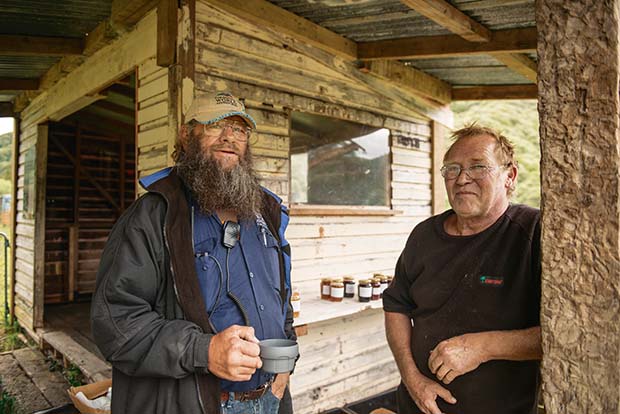
Paul “Griff” Griffiths and Lindsay at Tangarakau.
Out here nothing is as it seems. A giant tree stump marks the earliest colonial grave; a mildewed cottage belies its former role as an explosives depot for the Tatu Mine. Later, a blackberry-covered concrete block is all that remains of Tuhua’s once significant brickworks.
At the official “ghost town” of Tangarakau, Griff introduces us to Lindsay, the president, mayor and sheriff. Currently Lindsay is the producer and purveyor of woollen beanies and fruit preserves.
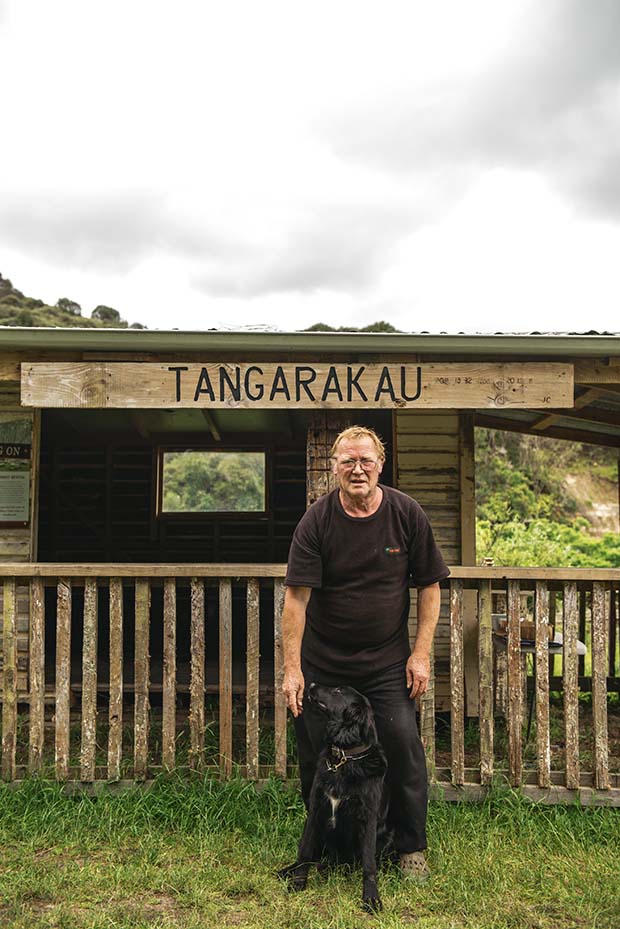
Lindsay (president, mayor and sheriff) of Tangarakau with Red.
“I’m waiting on new knees, so I’ve started breaking in dogs, too. Red here, she’s six months’ old but she can already round up my 100 head of sheep by herself.” In 1929 with 1200 residents, Tangarakau had a library, school and a maternity ward. Just a handful live here today but the hills are still abuzz, with worker bees turning out manuka honey.
“We’re travelling 8.3 kilometres underground today,” announces Griff. “So if you are scared of the dark, I suggest you close your eyes.”
Passing through tunnel eight we come to the longest viaduct on the line, the Mangaone Culvert. The original trestle bridge is only visible in our glovebox Rail Traveller’s Guides. The wooden frame was buried with the rubble from tunnel diggings and like so much around here scrub has reclaimed the steep banks. Rolling at a top speed of 20 kilometres an hour is about the right pace to appreciate how protracted a process it was to build this end of the line.
During the First World War, with the nation’s youth, horses, hardware and explosives all offshore, much of the tunnelling and bridge building was done with little more than pick, shovel and barrow, all supplies being walked in from ports on the Whanganui River.
At tunnel 10, we depart Taranaki and 1293 metres later we arrive in the King Country. Entering Ohura we step down from the carts to visit the old prison. “In the 1960s,” says Griff, “Ohura had the most successful Ford dealership in the country – for two years running.”
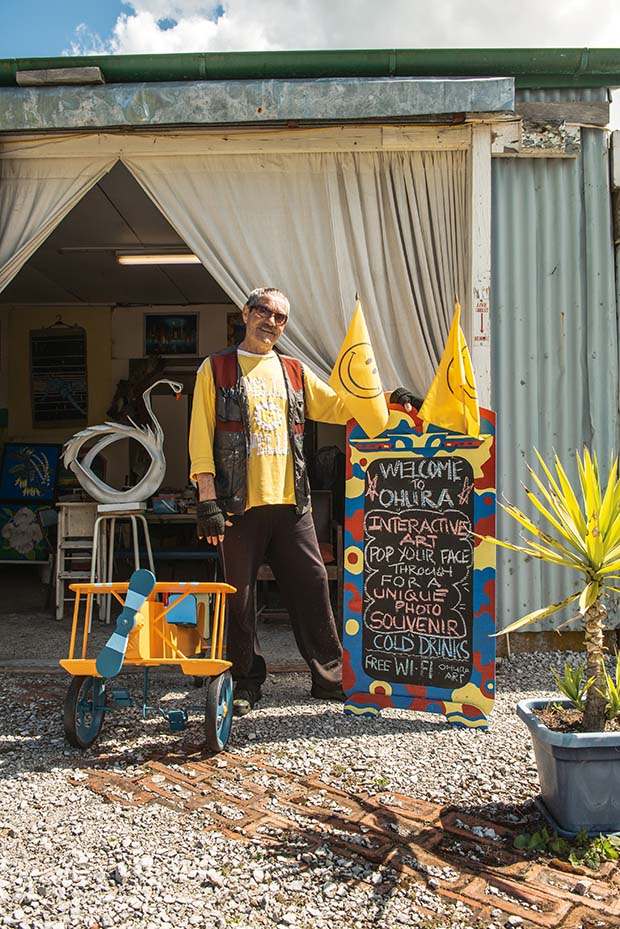
A comfort stop and history deep in the rugged King Country; Brian “Woody” Woodhead outside his Ohura Gallery.
Later, driving back down the Forgotten Highway, I discover Ohura’s deserted avenue of Edwardian shopfronts and mid-century buildings. The prison closure vacuumed the place clean of services and all but a few locals. Today, on the back of bargain property prices, a church group is now restoring the prison and creatives like Brian “Woody” Woodhead, the painter of the town’s murals, are starting to make their mark. This forgotten world is ripe for rediscovery.
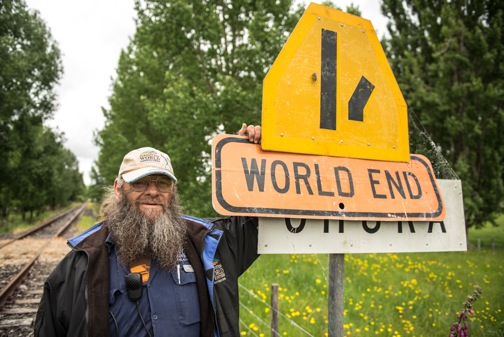
NOTEBOOK
Forgotten World Adventures: FWA offers everything from a one-day 10-tunnel tour to multi-day rail and Whanganui River packages. The Ultimate includes one night’s accommodation at the Whangamomona Hotel (whangamomonahotel.co.nz ) plus return transport from Okahukura/Taumarunui to Stratford on the Forgotten Highway, SH43. For an additional fee, FWA will arrange for your vehicle to be driven to meet you at Taumaranui. forgottenworldadventures.co.nz
Stratford Heritage Lodge: Dave and Carol Digby’s “flashpackers” in Stratford is the perfect base to park up for the Ultimate two-day trip. It is within walking distance of the town centre and the bonus is that FWA’s transport to the beginning of the line leaves from right outside. eastern-taranaki.co.nz/stratford-heritage-lodge


